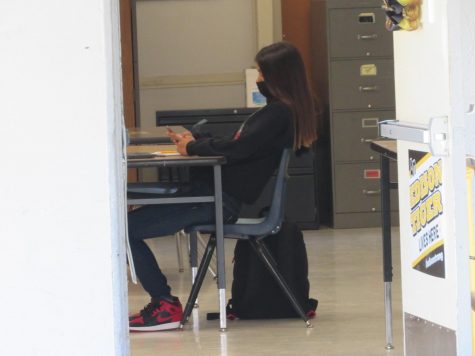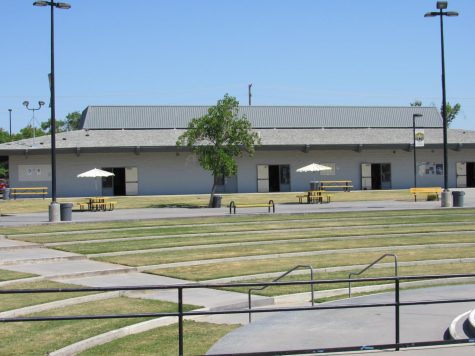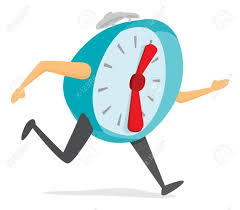The Real Scares of Halloween

November 2, 2020
For many people, Halloween is a time for candy, costumes, and fear, but the real scary parts about this holiday are the car accidents, dental health, littering, vandalism and crime, early age trauma, and cultural appropriation.
Of all dangers, car accidents are the most common on Halloween nights. According to an article from “usnews.com”, children are more than twice as likely to be killed by a car while walking than any other time of the year, as stated by the organization Safe Kids USA. Accidents usually occur during 4 p.m. to 10 p.m. or usually when the sun sets because that’s when drivers have the most difficult time seeing. Accidents can also happen because of drunk drivers. Not only do kids celebrate Halloween but adults do too. After getting wasted, adults may have a hard time focusing on driving and that is when accidents happen.
Halloween is the worst holiday of all. It’s filled with copious amounts of sugar, which surely isn’t good for people‘s dental health or their health in general. People can still enjoy the chilling holiday without walking around, taking candy from strangers. Halloween was originally a day for people to dress up and light bonfires to ward off ghosts, where did candy get introduced? It’s completely unnecessary. Some may say that Halloween is only one day of the year and the sugar should balance out over the course of 365 days. However, according to the Harvard Health Blog, “Two of those itty-bitty “fun-size” Snickers count as a serving size, and they contain 160 calories (8% of the standard daily allotment of 2,000) and 3 grams of saturated fat (15% of the daily limit of 20 grams, based on the 2,000-calorie-a-day limit).” Excess sugar is the last thing the average American child needs. The obesity rates in children and adolescents in the U.S are at 18.5%, affecting 13.7 million of them. Not to mention, the dental health of children and adolescents are also at risk. The various loads of candy provided on Halloween gives children a wide selection of sugar to choose from. Sweet and sour candy being the most detrimental to their teeth. The acidity in the candy erodes away enamel and promotes cavities. During a study conducted by researchers at the University of Iowa, they created two slurries of water and candy, one being water and the original candy and the other being water and the sour version. The researchers dipped two different thin slivers of teeth into each of the slurries for 25 hours. After examination, the lesions in the enamel were deeper in the slurry with the sour version of candy. Obviously, the “spooky” and sugar filled holiday we call Halloween isn’t worth the erosive effects of sugar on our teeth and our health.
Even though Halloween happens once a year the amount of candy consumed is astronomical. Americas buy close to 600 million pounds of candy for the one night of Halloween. In a country where obesity is a major problem people should not be eating and buying this much candy. It is good to have a few pieces of candy on Halloween but 600 million is a little much. On November first morning, when we go outside to get our morning paper, we see the true mess of Halloween in full light, rappers. Think about it, if Americans buy 600 million pounds of candy it must go somewhere. Wrappers go onto the ground or into landfills, while leftover candy that your mom doesn’t let you keep goes into the trash as well. People know that not all candy they give out is eaten, so this year buy less candy and clean up your wrappers!
Halloween is a very frightening holiday and maybe the worst one of all. Numerous amounts of crimes fill the night of Halloween and people fear the possibility of being a victim, especially since around 175 million Americans go trick or treating, according to CBS News. “There are on average 17 percent more crime-related claims on Halloween,” said Scott Humphrey, who handles risk control for Travelers, the third-largest personal insurer in the U.S. This is mainly because homes become a target for vandals and thieves when the home is empty since families are out trick or treating with the kids or at a party. According to James Alan Fox, a Northeastern University professor, “The evening violent crime count on Oct. 31 is about 50 percent higher than on any other date during the year, and about twice the daily average.” CBS News explains that many reports go out about people’s cars getting keyed and edged, homes and cars had broken windows, as well as a lot of “dings and dents” in autos parked on the streets. Moreover, the increase in thefts, snatch-and-grabs, and hit-and-runs usually begins to occur between Thanksgiving and New Year’s Eve, but Halloween is creeping up on that record and people don’t realize the fact that Halloween appears to be “the second biggest commercial holiday of the year,” as CBS News explained. It’s supposed to be a day of remembrance for the dead and a celebration for All Saints Day, but it has been changed into something it’s not. Holidays shouldn’t be feared, but Halloween is, and many families fear the crimes that may come upon them. Overall, Halloween isn’t worth the praise, and it’s not worth it in the end to love it when theft and vandalism are occurring to others. And who knows, the next victim might be you.
Many Americans believe that Halloween isn’t a good holiday because it can lead children or people of different ages to develop a variety of fears or even phobias which can follow them as they get older. The fear of clowns, coulrophobia or the fear of pumpkins, Cucurbitophobia are examples of the several phobias that can develop. Others say that Halloween is a time to express a child’s fear, or for those people to overcome those fears since they believe that it can’t impact them as much starting at a young age. Since the holiday is just days away, most people could already have pumpkins and are possibly carving them now without considering if anyone in their neighborhood can have a negative reaction from seeing them. Halloween is a holiday that is meant to scare people for the fun but several things like decorations, costumes, or movies can be frightening and not exactly fun because of how realistic they can appear. As reported by Purdue University, “The more realistic the images, the greater the intensity of the fear likely to be experienced. The closer to reality, the stronger the emotional reaction.” Some do not have the ability to understand that the visuals created are fake, making them believe what they see very quickly, and they can be extremely afraid of them. It may even progress to a phobic fear of Halloween, Samhainophobia for few. This year avoid putting frightening decorations outside and wearing scary costumes mainly for the fun of scaring others.
Cultural Appropriation is when cultural elements are copied from a minority culture by members of a dominant culture. It has been very apparent that many oppressed groups have found their unique and beautiful traditional clothing pieces turned into Halloween costumes. To the people dressing up as Native Americans or in Japanese Geishas, it’s not a big deal to them for it’s not their culture being used out of its original cultural context. Using these identities and cultures as a joke has become so normalized in today’s society since we use mascots relating to the culture, headdresses being worn at festivals, and sexualizing the Chinese qipao. When we see kids dressed as Disney characters (Moana, Pocahontas, Mulan, Jasmine) we aren’t able to recognize that it’s still offensive. Obviously, the last thing a parent want is for their child’s costume to be called out for being culturally offensive when they think it’s just spreading more culturally diverse costumes. Instead of being insensitive to other cultures this Halloween, respond by informing others, don’t sit around and be in guilt if you have appropriated in the past, volunteer to share your experience so that you can widen your community, and re-educate the people around you. The only way to end cultural appropriation is if all existing systems of oppression do so.
Our advice to you is that this year, be thoughtful not just for you and your family, but to others as well. By being thoughtful, you can prevent the issues of crimes, trauma, vandalism, and hurt you can bring to others on this single day. Overall, Halloween isn’t worth the praise and who knows, the next victim might be you.








Mckalah Jimenez • Nov 3, 2020 at 11:14 am
I agree with certain reasons as to why Halloween might be scary, such as the many car accidents that happen. I feel like a lot of people who drive while under the influence or who do not pay attention to the road should be dicipline for their crime(s).
Lily G • Nov 3, 2020 at 11:12 am
Interesting take on Halloween. Make you think twice before doing something on Halloween. I still like Halloween, but great editorial!
Armani • Nov 3, 2020 at 11:11 am
I definitely think that Halloween has a lot of unspoken negatives that we should focus on a lot more.